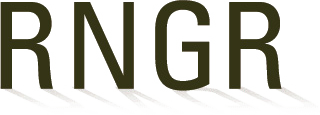
Balsamorhiza (deltoidea)
|
Sierra Smith Center for Natural Lands Management 120 Union Ave. SE #207 Olympia, Oregon 98501 360.283.5497 ssmith@cnlm.org www.idahobotanicalgarden.org |
| Family Scientific Name: | Asteraceae | ||
|---|---|---|---|
| Family Common Name: | Aster | ||
| Scientific Name: | Balsamorhiza deltoidea Nutt. | ||
| Common Name: | Deltoid Balsamroot | ||
| Species Code: | BADE2 | ||
| Ecotype: | Puget lowland prairies | ||
| General Distribution: | Grassy slopes, open forests, shrubby areas (Jepson eFlora 2012). California to British Columbia. | ||
| Known Invasiveness: | None | ||
| Propagation Goal: | seeds | ||
| Propagation Method: | seed | ||
| ProductType: | Propagules (seeds, cuttings, poles, etc.) | ||
| Time To Grow: | 5 Years | ||
| Propagule Collection: | Seed collection occurs mid-July through October. Must use bird netting over seed production field, birds will take all viable seed as soon as it is ripe. Cut heads individually as they ripen. Heads are ripe when seed will loosen with light rubbing. | ||
| Propagule Processing: | Break apart seed heads over screen, discarding the heavier receptacle pieces. Remove the chaff and non-viable seed with a Seed Tech air column separator with the following settings: seed intake gap 0.75 cm; vacuum gap 1.75 cm; hopper gap 1.75 cm; feeder at 3.5. Alternatively remove large chaff with an office Clipper seed cleaning machine with a medium amount of air flow, through either screen size combinations: 14RD and 6RD or9RD and 6RD. Discard chaff from port #2 and drawer 3, 4, and 5. Recover the course chaff with seed that did not fall through the top screen (either 14RD or 9RD). Save the very clean seed from main drawer. Take the course chaff/seed and seed that dropped into main tray and re-run through the Clipper once or twice to ensure cleanest seed. Non-viable seed will not be removed by the Clipper. | ||
| Pre-Planting Treatments: | Outdoor cold-moist stratification for 90 days. It germinates in cool temperatures throughout the spring. The germination length is 14 – 21 days. In the lab, a stratification time of 90 days and the use of smoke water results in the highest percent germination (approx.42%). | ||
| Growing Area Preparation/ Annual Practices for Perennial Crops: |
Use of bark mulch is effective at controlling weeds. Spray with herbicide while dormant in fall. Cover with bird netting to protect seed. Grow in fertile soil for best production. | ||
| Harvesting, Storage and Shipping: | Harvest in June, allow to dry before cleaning. | ||
| Length of Storage: | 2+ years | ||
| References: | Balsamorhiza. 2012. In Jepson Flora Project (eds.) Jepson eFlora. University of California Berkley. Accessed December 12, 2013. [http://ucjeps.berkeley.edu/cgi-bin/get_IJM.pl?tid=163]. Knoke, D. and D. Giblin. 2013. Balsamorhiza deltoidea. Plants of Washington. Burke Museum of Natural History and Culture. University of Washington, Seattle, WA. Accessed December 12, 2013. [http://biology.burke.washington.edu/ herbarium/imagecollection.php?Genus= Balsamorhiza&Species=deltoidea] | ||
Citation:
Applestein, Cara; Smith, Sierra. 2014. Propagation protocol for production of Propagules (seeds, cuttings, poles, etc.) Balsamorhiza deltoidea Nutt. seeds Center for Natural Lands Management Olympia, Oregon. In: Native Plant Network. URL: https://NativePlantNetwork.org (accessed 2025/06/07). US Department of Agriculture, Forest Service, National Center for Reforestation, Nurseries, and Genetic Resources.









